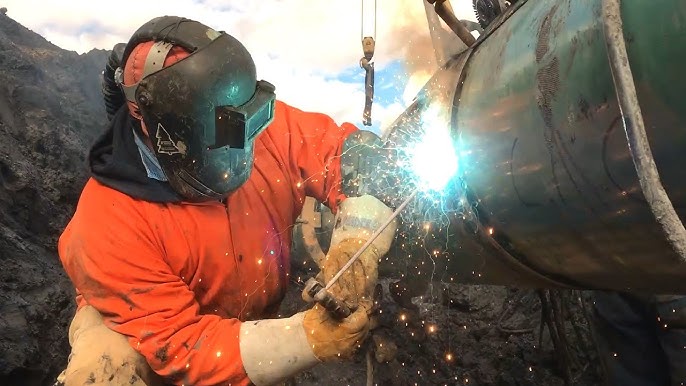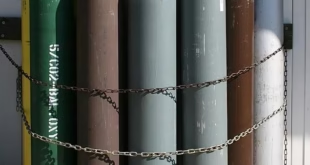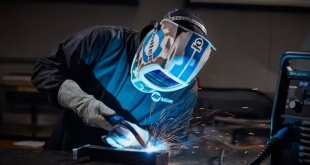P Number, F Number, and A Number in Welding (ASME Section IX)
In pressure vessel and piping fabrication, ASME Section IX stands as a cornerstone for regulating welding qualifications. Among the most essential classifications within this code are the P Number, F Number, and A Number. These numerical designations simplify the qualification process for Welding Procedure Specifications (WPS), Procedure Qualification Records (PQR), and Welder Performance Qualifications (WPQ).
Understanding these number systems is not just a matter of code compliance—it’s critical for productivity, safety, and consistency. In this guide, we will explore each of these numbers in detail, provide real-world examples, and explain how they interact within the ASME Section IX framework.
Overview of ASME Section IX
ASME Section IX is part of the Boiler and Pressure Vessel Code (BPVC) and governs the qualification of welding and brazing procedures, as well as the performance of welders and brazers. The code allows engineers and inspectors to use grouped classifications of materials and filler metals for ease of qualification without repeating similar tests unnecessarily.
P Number group base metals.
F Number group filler metals based on usability.
A Number classify deposited weld metal based on chemical composition.
These groupings help extend the range of qualified procedures and personnel and make the qualification process more flexible yet controlled.

Understanding P Number
Definition and Purpose of P Number
P Number are assigned to base metals that share similar chemical, physical, and mechanical properties. The goal is to streamline welding procedure qualifications so that materials within the same group can be considered equivalent for the purposes of PQRs and WPSs.
How P Number are Assigned
P Number are found in Table QW/QB-422 of ASME Section IX. They’re based on:
Material composition
Mechanical properties
Metallurgical behavior during welding
Weldability
Common P Number and Their Typical Materials
| P Number | Group Number | Typical Materials | Weldability |
|---|---|---|---|
| P-No. 1 | Gr. 1–2 | ASTM A36, A106 Gr. B (Carbon Steel) | Good |
| P-No. 3 | Gr. 1–2 | ASTM A516 Gr. 70 (C-Mn Steel) | Moderate |
| P-No. 5A | Gr. 1–2 | Cr-Mo steels (e.g., A387 Gr. 11) | Requires preheat/postheat |
| P-No. 8 | Gr. 1–4 | Stainless steels (304, 316, etc.) | Good (no preheat needed) |
| P-No. 15E | Gr. 1–2 | Titanium alloys | High sensitivity |
Role of P Number in Procedure Qualification
If a PQR is qualified with a material classified under P-No. 1, for instance, it can be used for all other materials in that group without additional procedure tests—unless essential variables like Group Number require otherwise (especially in impact-tested applications).
Understanding F Number
Definition and Relevance of F Number
F Number group filler metals by usability characteristics—such as deposition method, arc characteristics, and operator handling. These numbers are vital in Welder Performance Qualifications, where consistency in skill is more critical than chemistry.
Criteria for Grouping Electrodes and Filler Metals
F Number are grouped by:
Type of electrode or filler metal
Welding process
Operating characteristics
Deposition methods
They’re listed in Table QW-432 of ASME IX.
F Number and Common Electrode Types
| F Number | Typical Electrode Classifications | Description / Use |
|---|---|---|
| F-No. 1 | E6012, E6013 | Rutile, fast-fill, used for sheet metal |
| F-No. 2 | E7014, E7024 | Iron powder type, high deposition rates |
| F-No. 3 | E6010, E6011 | Fast-freeze, deep penetration, pipe welding |
| F-No. 4 | E7016, E7018 | Low-hydrogen electrodes, structural work |
| F-No. 6 | ER70S-6 (GMAW) | Solid wires for MIG welding |
Impact of F Number on Welder Qualification
A welder who qualifies using an F-No. 3 electrode is allowed to use all other F-No. 3 electrodes for production welding—assuming other variables like process and position are unchanged. But switching to an F-No. 4 electrode would require a new performance qualification.
Understanding A Number
Definition of A Number
A Number classify the chemical composition of the deposited weld metal. They are relevant during procedure qualification (PQR) but not usually essential in welder qualification.
How A Number Are Determined
The A Number is based on the results of weld metal chemical analysis, focusing on elements like:
Carbon
Manganese
Chromium
Nickel
Molybdenum
This data can be found in Table QW-442 or obtained through lab testing.
A Number and Weld Metal Chemistry
Controlling weld deposit chemistry is essential to ensure:
Adequate mechanical properties
Corrosion resistance
Compatibility with base metals
For example, using a filler metal that produces an A-No. 8 weld (typical for stainless steel) will yield different corrosion performance compared to an A-No. 1 carbon steel filler.
Practical Examples of A Number
A-No. 1: Weld metal for carbon steel (low carbon and manganese)
A-No. 8: Austenitic stainless steel weld deposits (high Cr and Ni)
Key Differences Between P, F, and A Number
Summary of Application in ASME IX Documents
| Number Type | Relevant Document | Essential for Procedure Qualification? | Essential for Welder Qualification? |
|---|---|---|---|
| P Number | WPS, PQR | Yes (essential variable) | Yes (limits welder’s qualification range) |
| F Number | WPS, WPQ | No (usually non-essential) | Yes (essential for performance test) |
| A Number | PQR | Yes (for specific processes) | No |
When and Where Each Number Applies in ASME IX
P Number: Define the base metal range in both WPS and WPQ.
F Number: Define filler metal classification range for welders.
A Number: Establish allowable weld chemistry ranges in PQRs.
How These Number Affect Welding PQR
Essential Variables vs Non-Essential Variables
In ASME IX:
A change in P Number is an essential variable.
A change in F Number is not essential for WPS but is for WPQ.
A change in A Number may be essential depending on the process (especially SMAW, SAW, and GTAW).
When Requalification is Required
If you change from a P-No. 1 to a P-No. 3 base metal, and it’s an essential variable for your process, a new PQR must be made. Similarly, if weld metal chemistry shifts beyond A Number ranges, requalification is necessary.
Application in WPQ
Limits of Qualification Based on P and F Numbers
A welder tested on P-No. 1 materials is not qualified to weld P-No. 8 materials without requalification. Likewise, switching filler metals across F Number usually invalidates previous qualifications.
Welder Retests and Range of Qualifications
Welders retain their qualification within the tested F Number and P Number range.
Retesting is needed when there’s a change in the essential variable range.
Using ASME IX Tables and Resources
Tables QW/QB-422, QW-432, and QW-442 Explained
QW/QB-422: Lists base metals and their P and Group Number.
QW-432: Lists filler metal F Number and processes.
QW-442: Defines A number based on weld metal chemistry.
How to Navigate and Interpret the Tables
Match the base metal to its P Number via QW/QB-422.
Cross-reference your electrode with QW-432 for the F Number.
Use QW-442 or chemical analysis for the correct A Number.
Challenges and Misconceptions
Misunderstanding A Number Requirement
Many engineers mistakenly ignore A Number, thinking they apply to all processes. In truth, they only matter for specific processes and don’t affect welder qualification.
Confusion Between P and F Number
Even experienced fabricators confuse P (base metals) with F (filler metals). Remember: “P” stands for parent metal and “F” for filler metal.
Errors in Selecting Equivalent Materials
Assuming two base metals are equivalent because they are both carbon steels can lead to mistakes. Always verify via P Number and Group Number.
FAQs
What is the difference between a P Number and an F Number?
P Number relate to base metals; F Number applies to filler metals. Each simplifies qualification by grouping similar materials or electrodes.
Can two materials with different P number be welded without requalifying the procedure?
Not typically. A change in P Number usually requires a new PQR unless allowed by ASME IX provisions.
How is the A Number determined for a filler metal?
Through chemical analysis of the weld deposit or by referring to AWS classifications and ASME QW-442.
Is the F Number the same across all welding processes?
No. F Numbers vary based on electrode type and welding process.
Where can I find the list of P, F, and A number in ASME IX?
P Number: Table QW/QB-422
F Number: Table QW-432
A Number: Table QW-442
Conclusion
Understanding P Number, F Number, and A Number isn’t just about meeting ASME IX code—it’s about welding smarter, more efficiently, and more safely. These classifications allow engineers and welders to make qualified substitutions, avoid redundant testing, and ensure the integrity of critical welds.
 Welding of Welders All about Welding and Welders
Welding of Welders All about Welding and Welders



